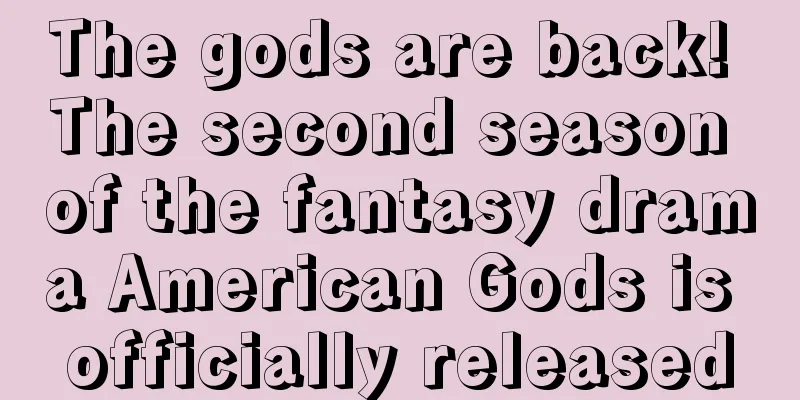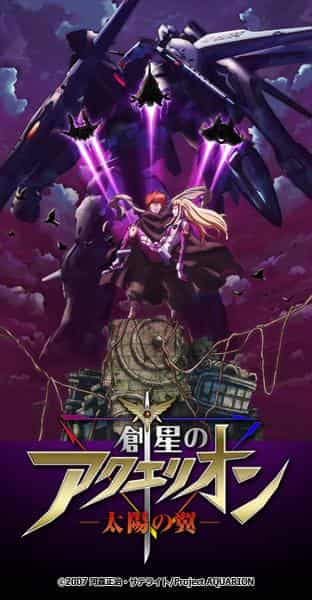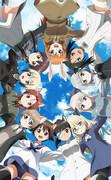"The Slayer of the Eight-Headed Serpent" review: What is the appeal of this anime that depicts a battle with a legendary monster?

The whole story and appeal of "The Slaying of the Eight-Forked Serpent" - Yamata no Orochi Taiji■ Public Mediatheater ■ Original MediaAnime Original ■ Release date1956 ■ Number of EpisodesEpisode 1 ■Original StoryOno Sokyo ■ Production・Produced by Chiyogami Eigasha ■Explanation"The Extermination of the Eight-Forked Serpent" was produced as part of a series of shadow puppets based on the Kojiki tales. The film was released in theaters in 1956 and produced by Chiyogami Eigasha. The original story was written by Ono Sokyo and produced under the planning of the Association of Shinto Shrines. Using the traditional method of expression known as shadow puppetry, the film depicts the story of "Yamata no Orochi," one of the myths depicted in the Kojiki. This work occupies an important place in the history of Japanese animation films, so let's take a closer look at its background, production process, and the appeal of the film. ■ Main staff・Production: Chiyogami Eigasha ・Planning: Shinto Shrines Association ・Original story: Ono Sokyo ・Proofreading: Ono Sokyo ・Illustration: Ofuji Nobuo ・Direction: Ofuji Nobuo ・Music: Hirai Kozaburo ■ Background and production process of the work"The Extermination of the Eight-Forked Serpent" is based on the story of "Yamata no Orochi," one of the myths depicted in the Kojiki. Yamata no Orochi is a giant snake with eight heads and eight tails, a terrifying creature that demands one maiden as a sacrifice every year. This story depicts the heroic adventure of Susanoo no Mikoto to defeat Yamata no Orochi and save the maiden. The film was produced by Chiyogami Eigasha, one of Japan's leading animation production companies after the war, known in particular for its works using shadow puppets. Shadow puppets are a traditional method of expressing a story using light and shadow, creating visual beauty and a unique atmosphere. "The Extermination of the Yamata no Orochi" was produced as part of this project, and it reinterprets the myths of the Kojiki from a modern perspective. Ono Sokyo, who wrote the original story and was responsible for proofreading, is known as a researcher of the Kojiki. His deep knowledge and understanding are reflected in the story and character portrayal of this work. Ofuji Nobuo, who was in charge of illustrations and direction, used shadow art techniques to visually express the fearsomeness of Yamata no Orochi and the courage of Susanoo no Mikoto. Hirai Kozaburo, who was in charge of music, provided music using traditional Japanese instruments to enhance the atmosphere of the work. Thanks to the cooperation of these staff members, "The Extermination of the Eight-Forked Serpent" became a highly polished work. ■ Appeal and evaluation of the workThe greatest appeal of "The Slaying of the Eight-Forked Serpent" is its use of the traditional art of shadow puppetry. Shadow puppetry uses light and shadow to tell a story, creating visual beauty and a unique atmosphere. Shadow puppetry techniques are used particularly effectively to express the enormity and terror of Yamata no Orochi. Shadow puppetry also delicately depicts the brave figure of Susanoo no Mikoto and the beauty of the maiden. The story is also one of its attractions. Based on the myths depicted in the Kojiki, the story has deep historical background and cultural significance. The heroic adventure of Susanoo-no-Mikoto to defeat Yamata-no-Orochi and rescue the maiden moves and excites the audience. The messages and lessons conveyed through the story are also valuable for modern audiences. Music is also an important element in enhancing the appeal of the work. The music provided by Kosaburo Hirai uses traditional Japanese instruments, further enhancing the atmosphere of the work. In particular, the music enhances the tension and excitement in the scenes where Yamata no Orochi appears and where Susanoo no Mikoto fights. "The Extermination of the Yamata no Orochi" occupies an important place in the history of Japanese animation films. Released in 1956, this pioneering work depicts the myths of the Kojiki using the traditional expression technique of shadow puppetry, and has had a major influence on subsequent animation works. Furthermore, the high level of completion and visual beauty of the work have been highly praised by many viewers. ■Details of the workThe story of "The Slaying of the Eight-Forked Serpent" is based on the myth of Yamata no Orochi, depicted in the Kojiki. The story begins when Susanoo no Mikoto is banished from Takamagahara and descends to earth. On earth, he learns of the existence of the terrifying Yamata no Orochi, who demands one maiden as a sacrifice every year. The maiden chosen for that year's sacrifice is a beautiful young girl named Kushinadahime. Susanoo no Mikoto decides to fight Yamata no Orochi to save Kushinadahime. Susanoo no Mikoto came up with a plan to defeat Yamata no Orochi. He came up with a plan to prepare a large amount of sake, which Yamata no Orochi likes, and let it flow into the river to get Yamata no Orochi drunk. He then hid Kushinadahime and faced Yamata no Orochi himself. Yamata no Orochi became drunk and slowed down, and Susanoo no Mikoto took advantage of this opportunity to defeat Yamata no Orochi. The sword that emerged from Yamata no Orochi's tail would later be called the Kusanagi sword. This story depicts the courage and wisdom of Susanoo-no-Mikoto, and the beauty and purity of Kushinada-hime. The fearsomeness and enormousness of Yamata-no-Orochi are also effectively expressed through the shadow art technique. The viewer is drawn into the adventures and battles of Susanoo-no-Mikoto, and is moved by the conclusion of the story. ■Influence and evaluation of the work"The Slayer of the Eight-Headed Serpent" occupies an important place in the history of Japanese animation films. Released in 1956, this pioneering work depicted the myths of the Kojiki using the traditional expression technique of shadow puppetry, and had a major influence on subsequent animation works. In particular, works that used shadow puppetry techniques showed new possibilities for subsequent animation production. Furthermore, the story based on the myths of the Kojiki deeply moved and excited the audience, and has been highly praised by many people. This work has been well received by many viewers due to its visual beauty and the appeal of its story. The delicate expression of the shadow puppets and the music using traditional Japanese instruments enhance the atmosphere of the work and draw the viewer into the world of the story. In addition, the courage and wisdom of Susanoo-no-Mikoto, the beauty and purity of Kushinada-hime, and the fearsomeness and enormousness of Yamata-no-Orochi leave a strong impression on the viewer. The combination of these elements makes "The Slaying of the Eight-Forked Serpent" a highly polished work. ■ Recommendations and related works"The Extermination of the Eight-Headed Serpent" is recommended for those who want to enjoy the story based on the mythology of the Kojiki and the visual beauty of shadow puppets. The music, which uses traditional Japanese instruments, also enhances the appeal of the work. This is a work that should be seen by anyone, especially those who are interested in myths and legends, or those who are interested in the history of Japanese animation films. Related works include animations based on the myths of the Kojiki and works using shadow puppets. For example, the "Japanese Folk Tales" series and "Shadow Puppet Animation Urashima Taro" are recommended. These works also use traditional expression techniques to depict Japanese myths and legends, and have a common appeal with "The Extermination of the Eight-Headed Serpent." In addition, among modern animation works, works based on the myths of the Kojiki and works using shadow puppet techniques are being produced, and these also provide an interesting viewing experience. "The Extermination of the Eight-Forked Serpent" is a work that deeply moves and excites viewers with its story based on the myths of the Kojiki, the visual beauty of the shadow puppets, and music using traditional Japanese instruments. This work, released in 1956, occupies an important place in the history of Japanese animation films and had a major influence on subsequent animation works. Please watch this work and experience its charm and value. |
<<: The appeal and evaluation of "Hyotan Suzume": A moving story and the depth of its characters
>>: "Tsuruhane" review: A moving story and beautiful visuals
Recommend
The appeal and reviews of "DamePri ANIME CARAVAN": An anime experience you can't miss
DamePri Anime Caravan - DamePri Anime Caravan ■ P...
Lucas's vision for Star Wars 8 is actually very similar to what we see
With the official conclusion of the nine Star War...
"Gu Jian Qi Tan" animation poster released, Tencent Video exclusive broadcast
At the 2021 Tencent Video Animation Annual Confer...
Review of the director's cut version of Aquarion EVOL Episode 26: How complete is it as the culmination of the series?
The appeal and evaluation of the director's c...
Review of "Megumi no Kenka": A deep look into the story of fierce battles and friendship
All-round review and recommendation of Megumi no ...
The animated series "Blade Runner: Black Lotus" released two trailers and will be broadcast in 2021
The animated series "Blade Runner: Black Lot...
New stills of the movie "Dune" revealed that Tiancha and "Thanos" appeared together
Empire magazine recently revealed new stills from...
Hikaru no Go: A review and review of a classic anime that depicts the charm of Go and the brilliance of youth
Hikaru no Go: The story of a boy fascinated by th...
"It" is here again! "Crazy Alien" "Abduction Edition" trailer
Aliens are coming again! Today, Ning Hao's ne...
The horror details of the online drama "Yunnan Worm Valley" are even more thrilling and scary
"Yunnan Worm Valley" starring Pan Yuemi...
"Jiang Ziya" character posters released, Su Daji, Shen Gongbao and others appeared
Today (December 26), the animated film "Jian...
Nembutsu Monogatari 7: A fusion of profound themes and beautiful visuals
Detailed review and recommendation of Nembutsu Mo...
Columbia Pictures to produce Horizon Zero Dawn movie
At Sony's CES 2025 press conference, PlayStat...
Puss in Boots 2: New Chinese subtitle trailer to be released on December 21
The brave and cute big-eyed Puss in Boots is back...
"Lost in Russia" new poster "Lost in Russia" released, Yuan Quan hides in the snow doll
Today (November 20), the new poster of the movie ...









